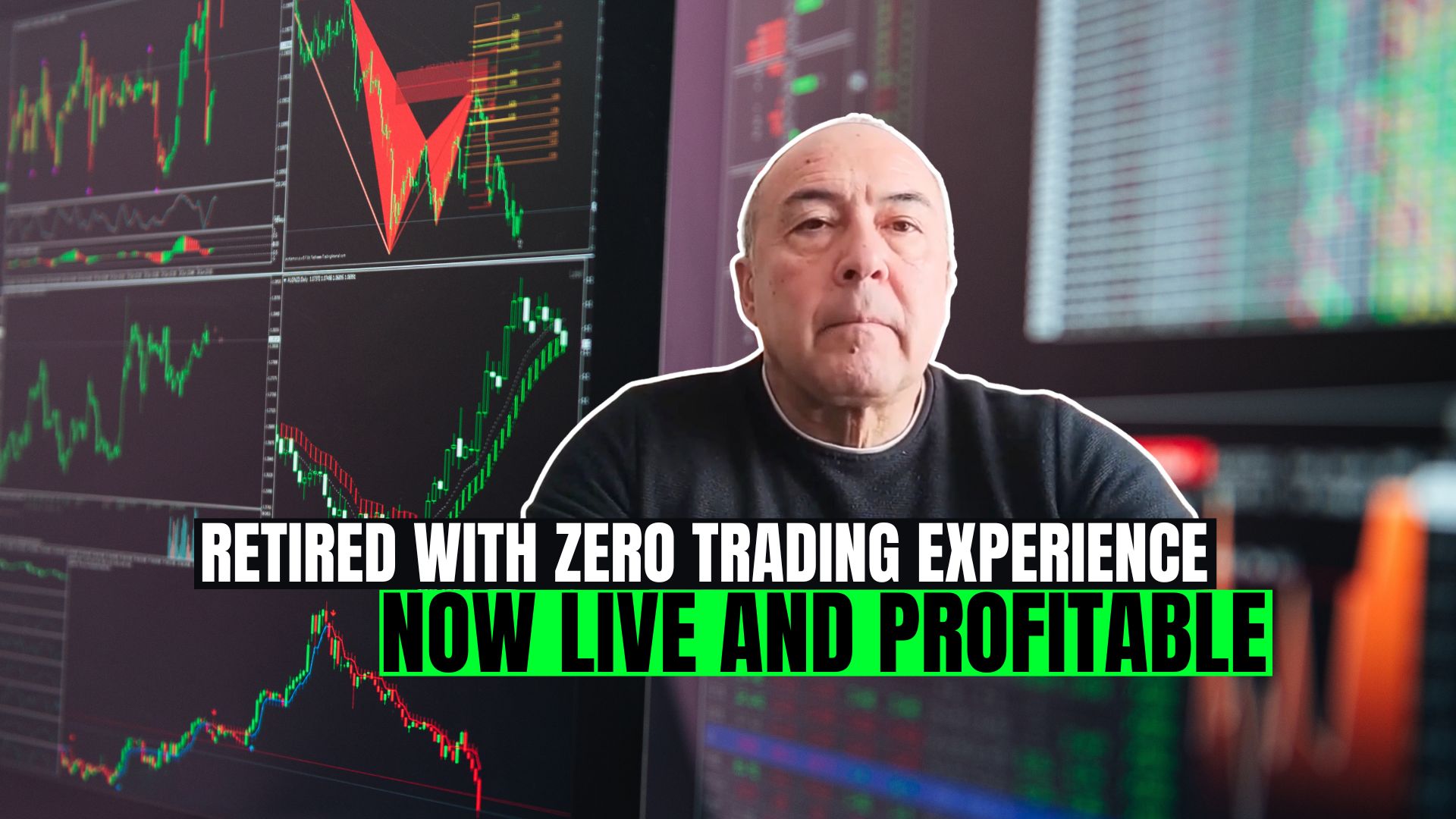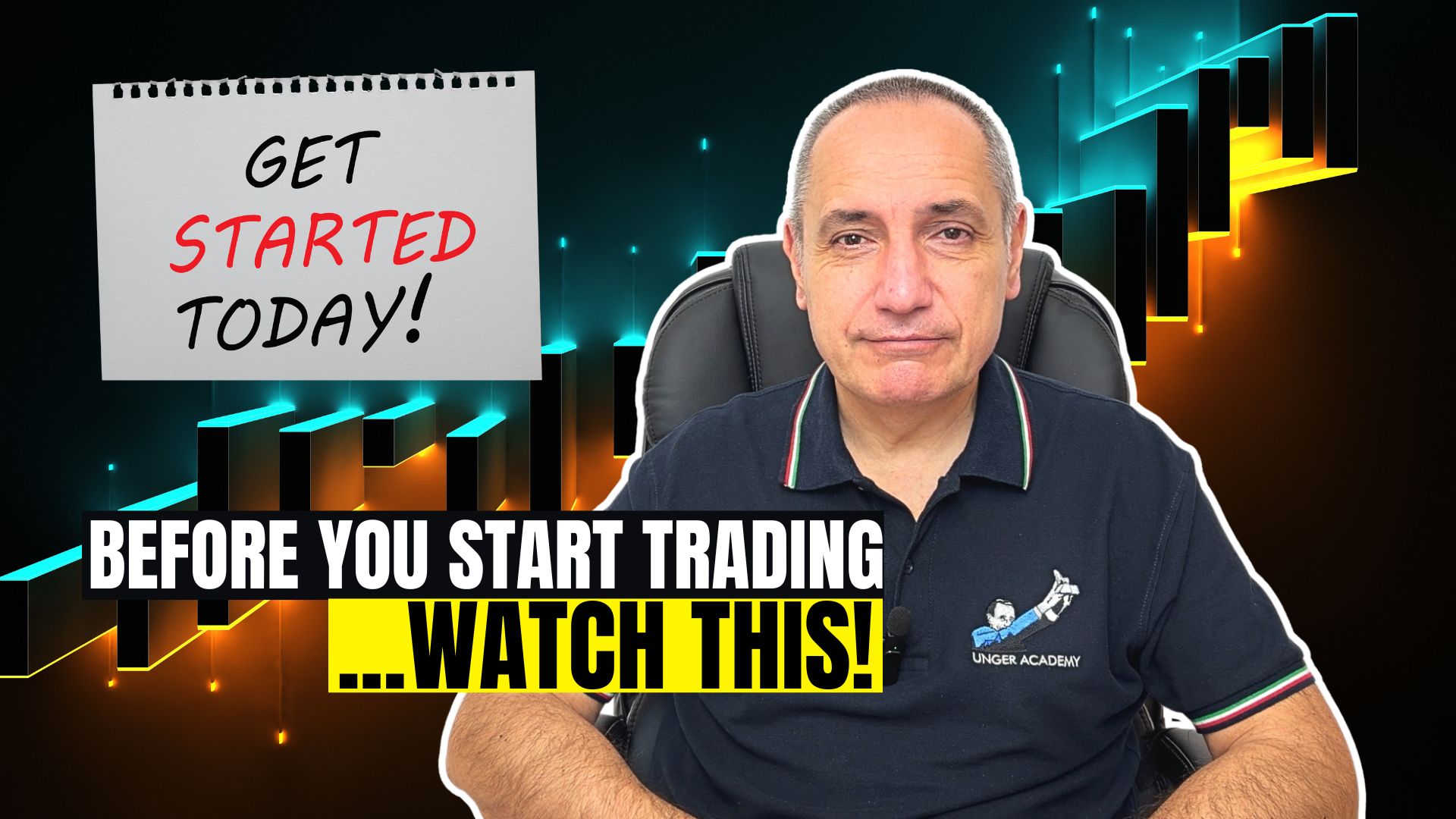Hey guys, and welcome! I’m one of the coaches of Unger Academy and today we’re going to be talking about Trend Lines, one of the most famous indicators in technical analysis. And, in particular, we’ll try to apply them to cryptocurrencies.
Okay, so in this video, we’ll try to understand if trend lines could be a valuable and effective tool that we could use to set up entries and exits in our trading systems.
What are trend lines?
Before doing that, we first need to define what a “trend line” is. Generally, trend lines are defined as dynamic supports or resistances within which prices move.
Let’s try and plot a trend line on this chart, which tracks the prices of Ethereum, the second most important cryptocurrency by capitalization – and the first one obviously we all know is Bitcoin. This is the price trend of the last period. So let’s draw our trend lines so that prices are within the range between these two lines as much as possible.
Use of trend lines in technical analysis
In technical analysis, trend lines are generally used to buy on the supports and sell on the resistances. In this case, the trading range that contains the prices is not horizontal but dynamic because prices move upwards. So you buy on the supports and sell on the resistances.
This approach works particularly well on those underlying assets that tend to move in a “ping-pong” way, and it can certainly be used in mean-reverting strategies, that is, for markets whose prices tend to go back to average values.
The point with cryptocurrencies is that they tend to have a trend-following behavior rather than a mean-reverting behavior, which means that they may not be very suitable for this kind of approach.
Use of trend lines on cryptos
For this reason, I believe that it might be much more useful to use trend lines to trade the breakouts in the case of cryptocurrencies. For example, we could decide to use a trend line like this one and, when this trend line is broken through, we could go long right here because the market seems to be about to break through a dynamic resistance, so it may continue its bullish run.
And to do this, we obviously need some objective criteria that let the system identify the trend lines. In fact, to use this indicator in an automated strategy, we first need to teach the machine, teach MultiCharts what a trend line is.
In technical analysis books, the concept of a trend line is a bit smoky because there isn’t just one way to trace a trend line. For example, according to some people, this line should be lower, while according to some others, it should be moved higher. In this case, we can’t afford this kind of subjectivity because the machine needs to be able to identify unequivocally when there is a trend line and when the prices break through it, which is when the system should open the position.
The criterion that we decided to use to define trend lines in our system is based on the so-called Swing Points. Swing Points are highs or lows that, both on the right and the left, are surrounded by a certain number of bars set through the system’s inputs.
How to code a trend line
So let’s move on and see how to use these trend lines in a trading system. This system was programmed by Davide Tagliabue, one of our coaches who’s very good at programming. And as you can see in this chart, Davide identified the swing points that we will use.
These are the swing highs, and these are the swing lows. So, these points can be connected to form the trend lines, and when the trend lines are broken through, the system trades that breakout and then closes all the positions at the end of the day.
How the trend line system works
Since cryptocurrencies are characterized by a strong bullish Bias, we decided to trade only on the long side. Experience has taught me that being profitable by going short on cryptocurrencies is really very difficult.
So let’s take a look at some other trades that were made by this trading system. Here you can see a trade that hit a stop loss. But let’s go ahead. Here there are two more entries, the first one is more or less at break even while the second one is in profit, and they were both closed at the end of the day.
The system performance report
At this point, let’s take a look at the performance report. As you see, the system makes a profit of $21,000 in 4 years and 2 months, with the backtest starting in September 2017.
The capital per trade is $10,000. The profit factor is 2, the return on maximum drawdown is 5.6, and the maximum close-to-close drawdown is $2,900. Now, these results seem to be definitely interesting.
So let’s also take a look at the average trade. It’s $87, which means 0.87% of the capital per trade, so it can be considered enough to cover commissions, slippage, and operating costs.
At this point, you’re probably curious to see what the equity line of this system looks like. So here it is, and it’s definitely very good. It’s a bit horizontal in the first phase. However, if we look at the buy and hold, we can see that that was a time when Ethereum went down. So let’s say that the strategy was somehow able to limit the damage (I remind you that we trade only on the long side) and continue to rise quite regularly (let’s take a look at the buy and hold again). And this was probably possible thanks to the strong bullish trend of this cryptocurrency.
Evaluation of the system
So by looking at these results, we may certainly be led to conclude that trend lines seem to work pretty well on cryptocurrencies, at least on Ethereum.
However, I must tell you that this same system, when we apply it to traditional markets, and more in detail to traditional markets that respond very well to breakout strategies, such as Crude Oil or Gold, doesn’t produce the same good results we’ve just seen.
If on Gold, we can see something interesting, on Crude Oil, the system clearly doesn’t work, and on other markets that usually work well with breakout approaches, this system struggles to produce good results.
So my question is this: is it the trend line system that performs well, or is it thanks to the market to which we’re applying it? Because it’s even possible that, due to the high volatility of cryptos, systems that struggle when applied to traditional markets can instead perform very well on these instruments.
A crypto system developed with the Unger method
To answer this question, I decided to test another system. It’s much simpler than the previous one, and it’s made up of just a few lines of code. The entry setup is the breakout of the previous day’s high, and entries are filtered using the classic filters of the Unger Method, which let us separate the winning trades from the losing trades.
Now what I’d like to do is compare this system and the one based on the trend lines to figure out if the good performance we have seen depends on the characteristics of the underlying or on the effectiveness of the system itself.
In this chart, you can see the equity line of the second trading system, the simpler one. As you can see, the line rises by almost 45 degrees and has a truly enviable regularity.
Let’s also take a look at the system metrics. It earns $24,000 in the same period, so it makes more money than the previous system. The profit factor is 2.39, and, more importantly, the return on drawdown rises from 5 to 21.
The average trade – I’m going to show it to you immediately – goes from 87 to 98, so the average trade also improves a lot. So given these results, we can certainly say that the second system wins over the trend line system.
Conclusions
This means that a simpler strategy based on a pretty trivial setup, that is, the high of the previous day and the entries filtered using the Unger Method, produces results that are much better than those produced by the more advanced and complex system based on trend lines, which in reality doesn’t bring any added value.
Its good performance is only related to the characteristics of the market, which responds so well to breakout approaches that even a quite inefficient system can be profitable.
Alright, guys. If you’re interested in learning how to build trading systems like the ones I’ve just shown you, using the method of the only 4-time world trading champion Andrea Unger, I’m gonna leave you a link in the description of this video. It’ll take you to a webinar in which Andrea condensed much of the first-hand experience he gained in the markets since he started training in 2000.
I really hope that this video has helped you! If you have any interesting questions or ideas, please write them in the comments, and maybe we’ll make a video based on them too!
I’ll see you on our next video, bye-bye!







